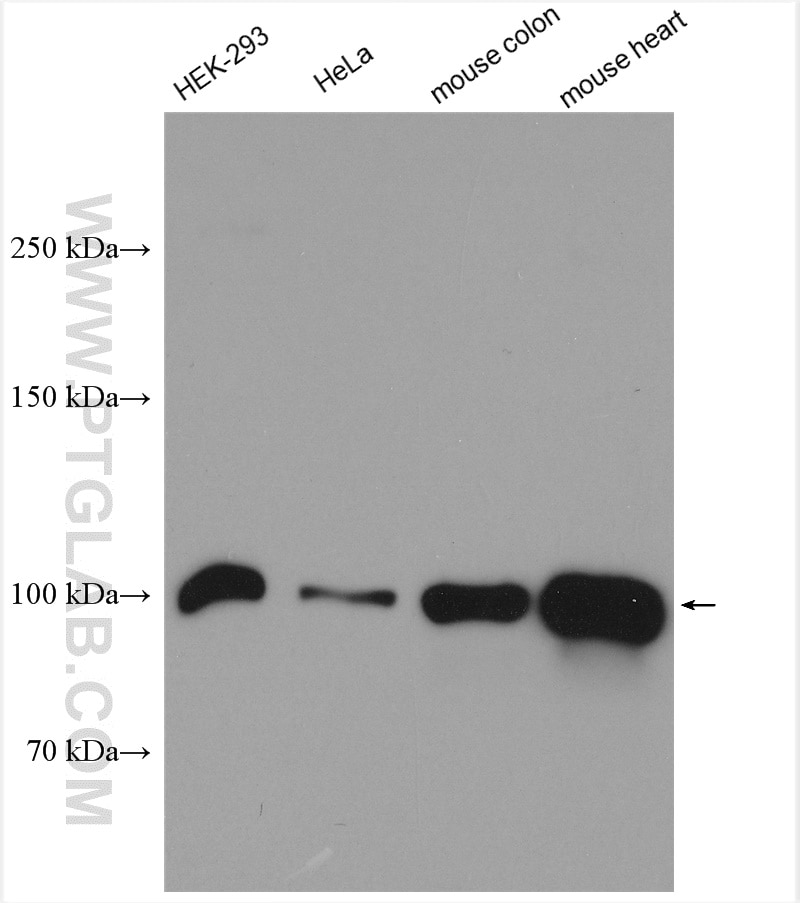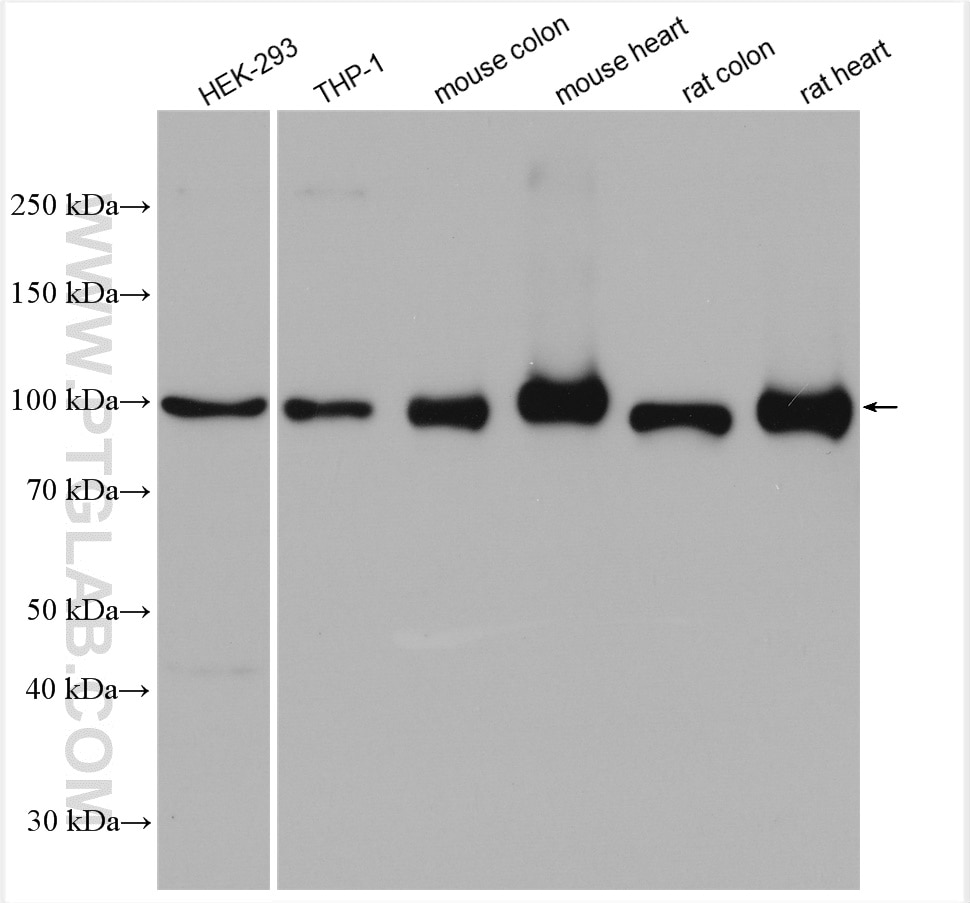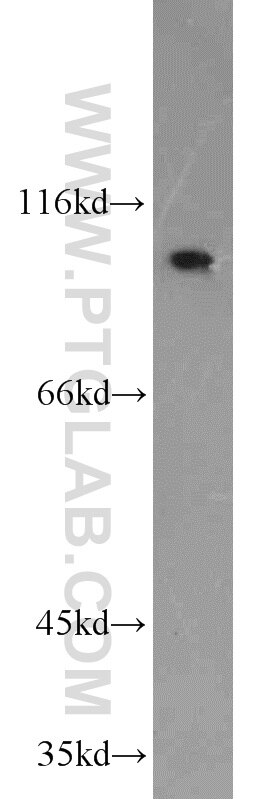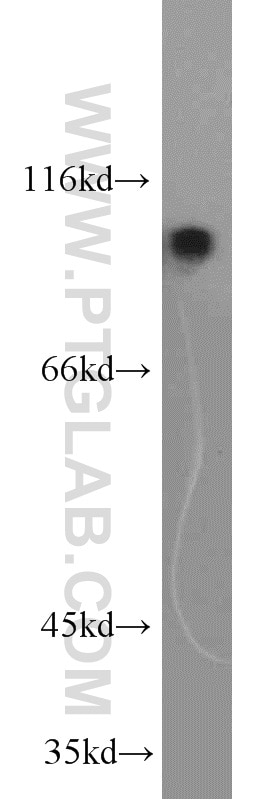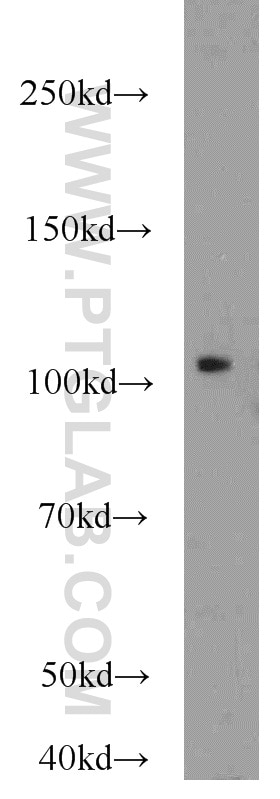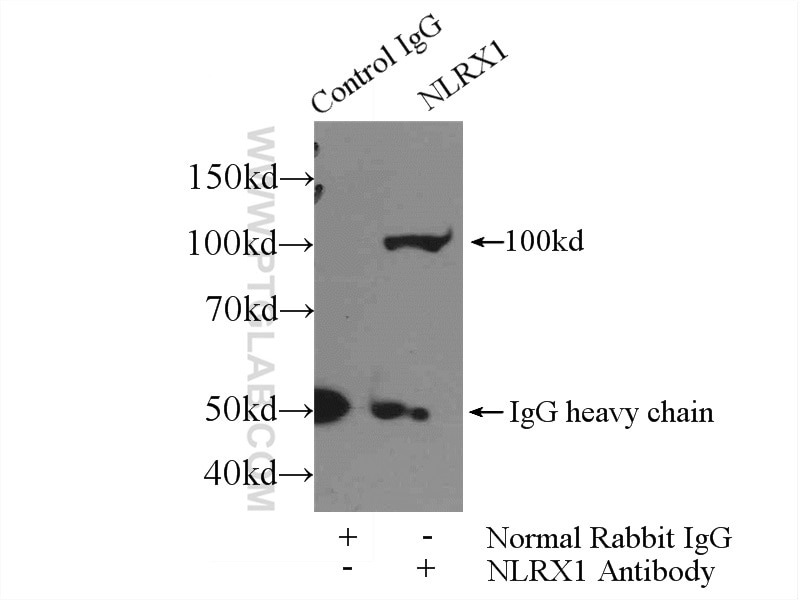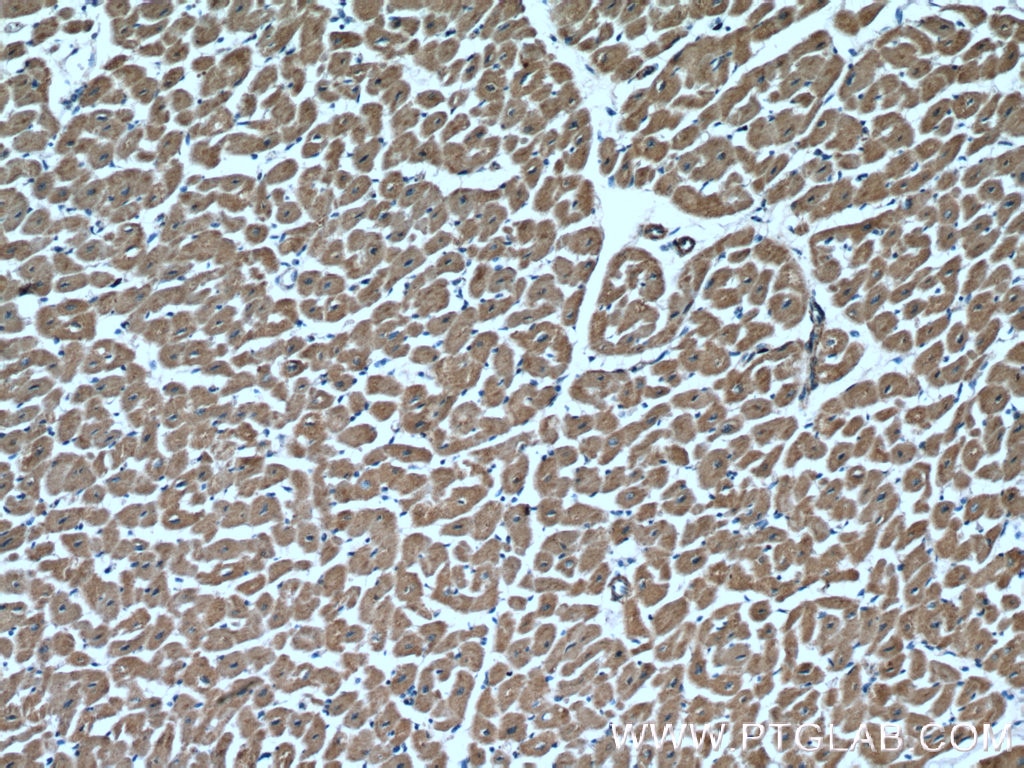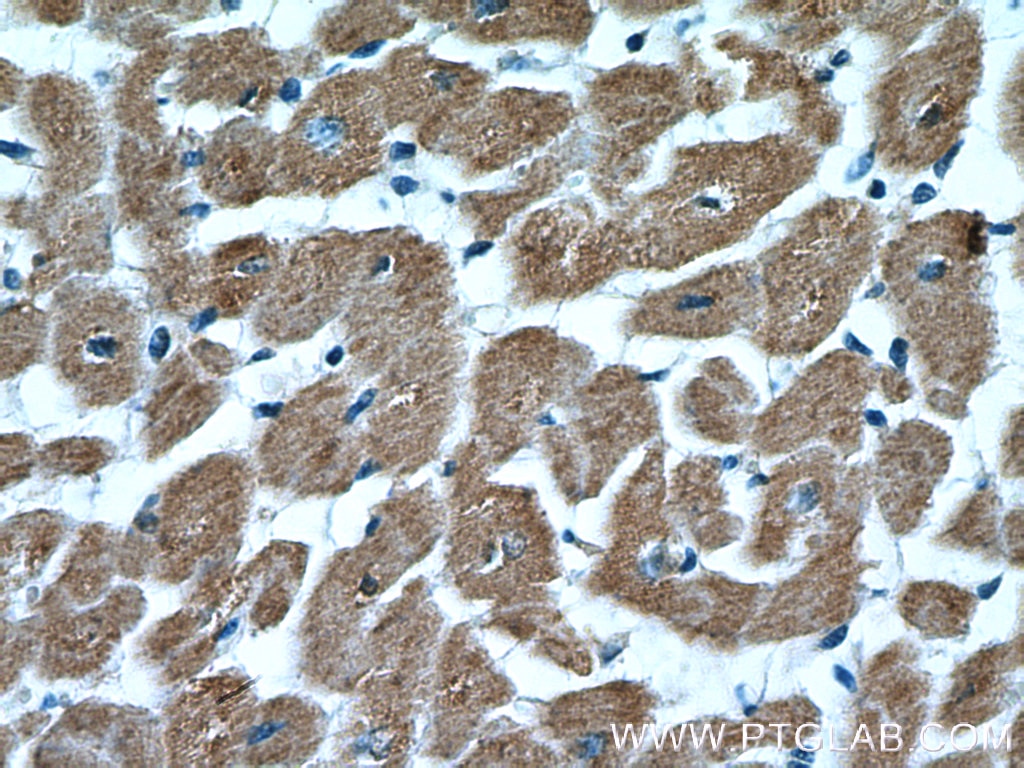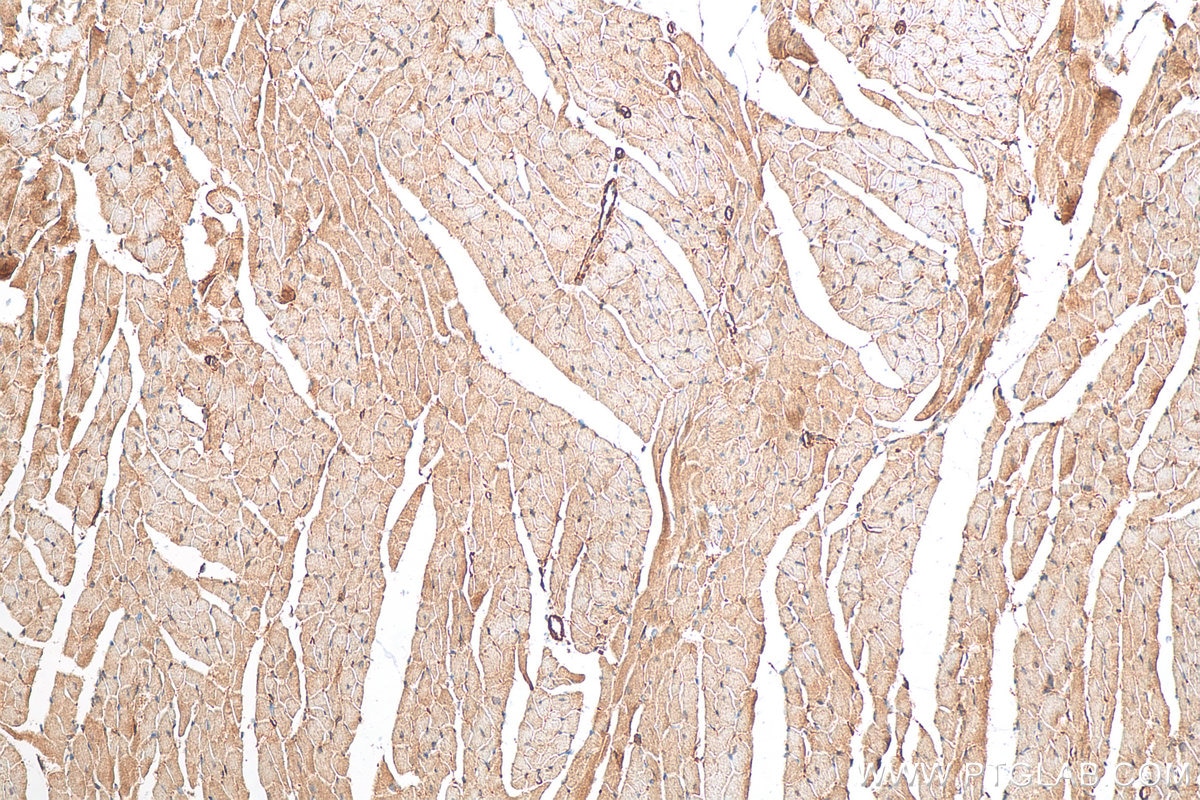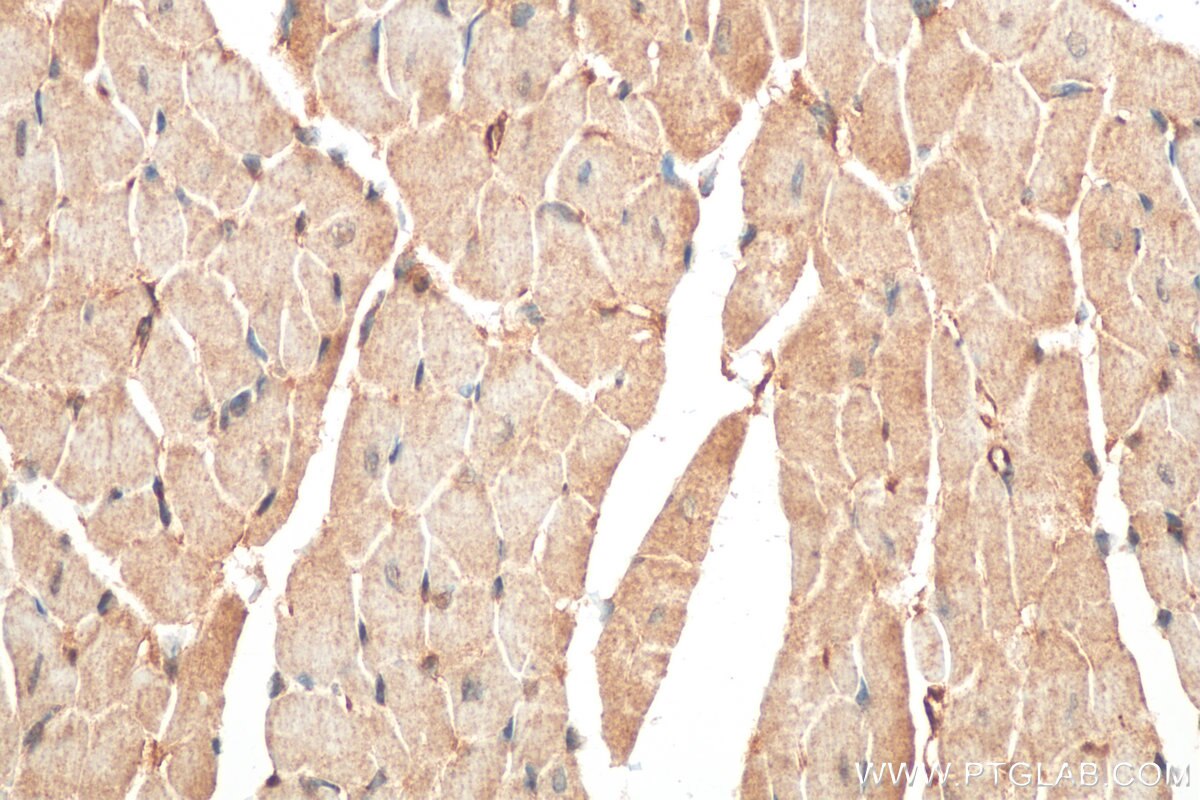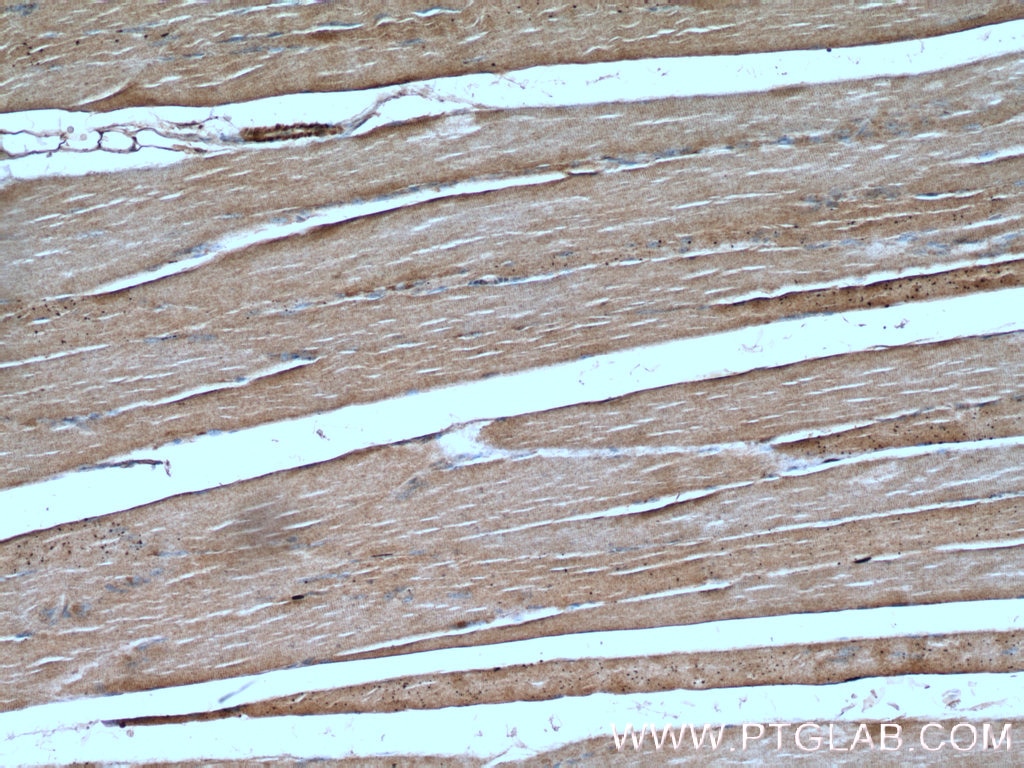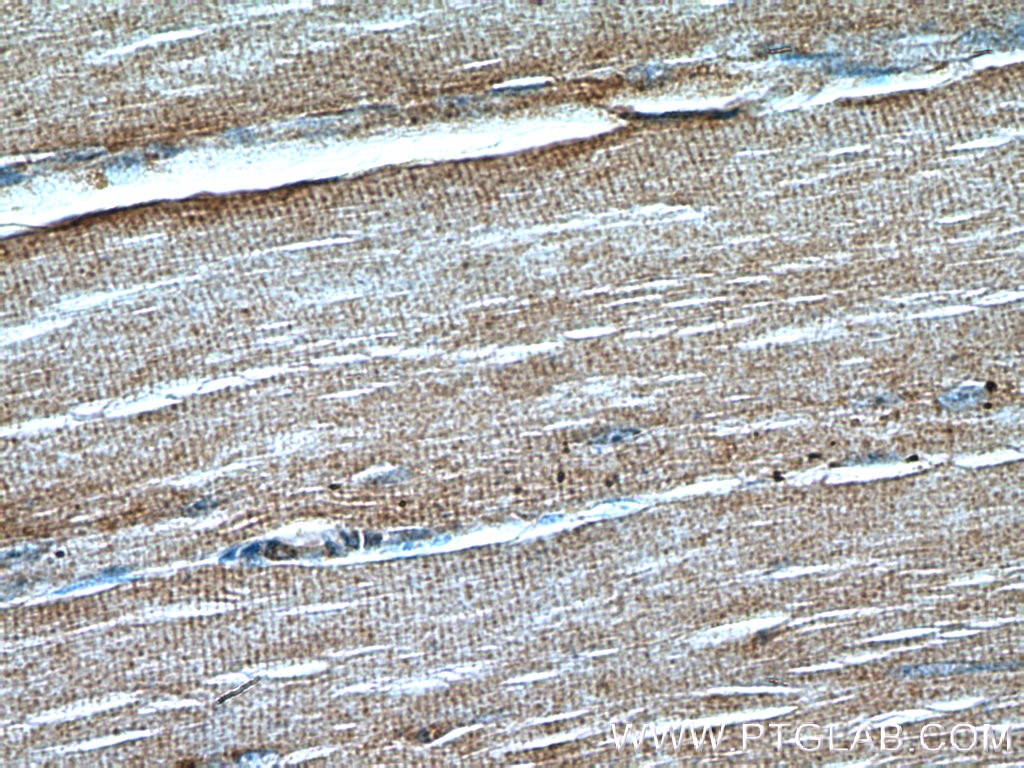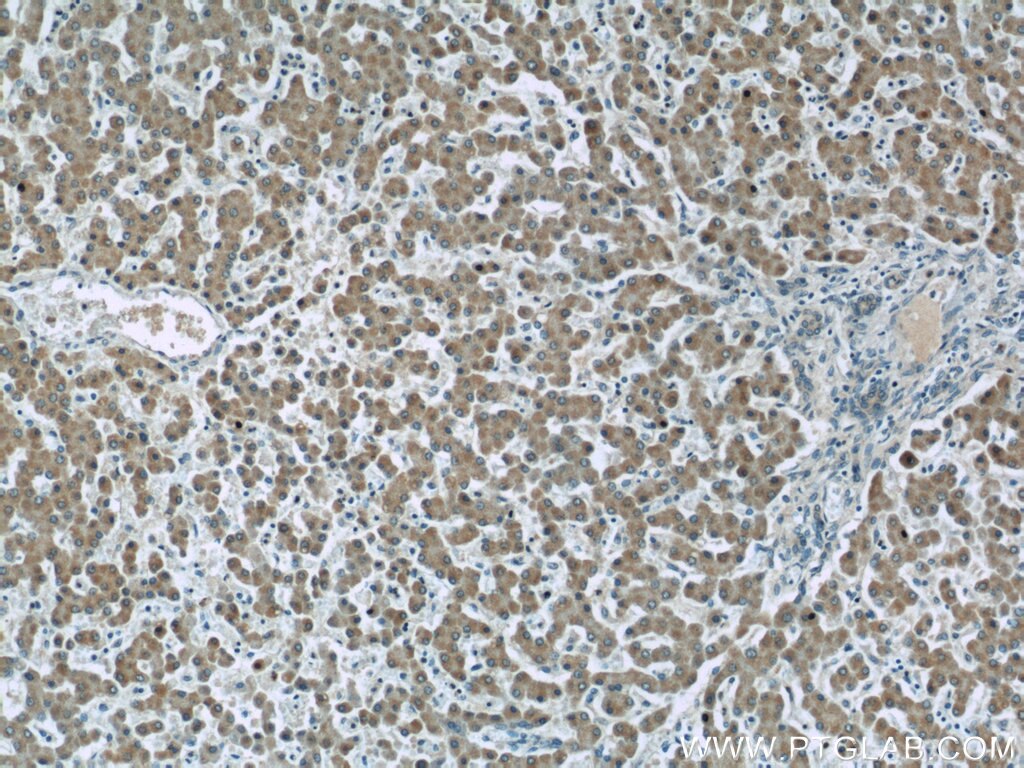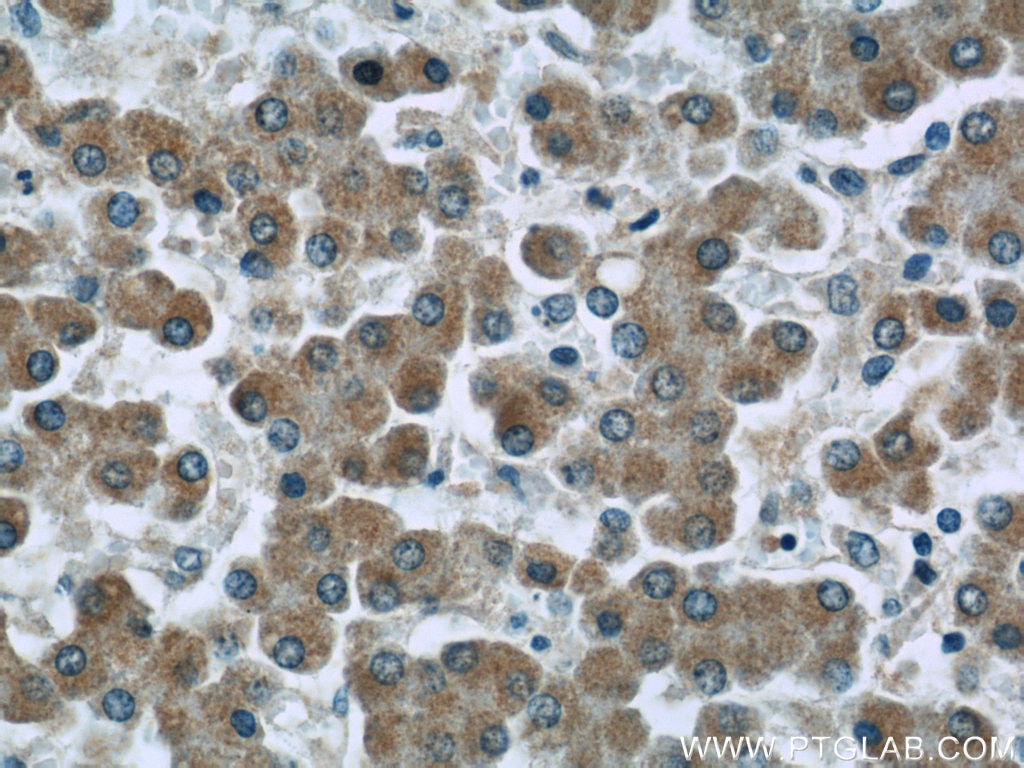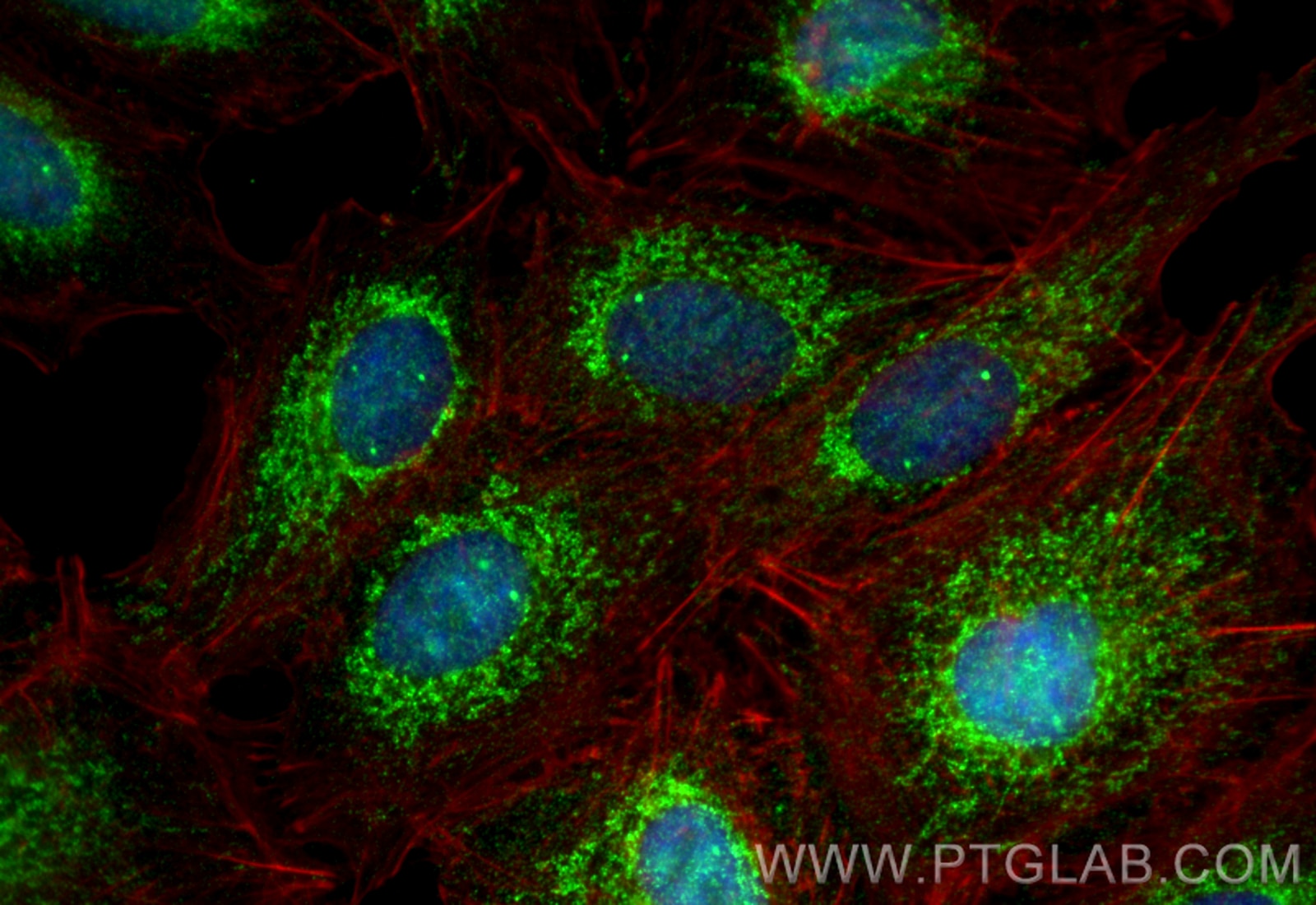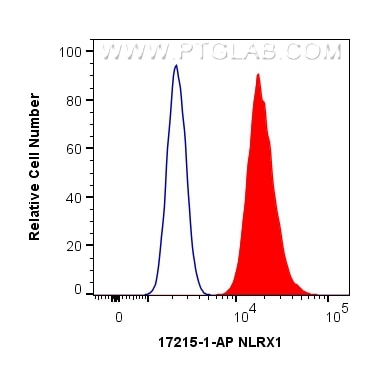- Featured Product
- KD/KO Validated
NLRX1 Polyklonaler Antikörper
NLRX1 Polyklonal Antikörper für WB, IHC, IF/ICC, FC (Intra), IP, ELISA
Wirt / Isotyp
Kaninchen / IgG
Getestete Reaktivität
human, Maus, Ratte
Anwendung
WB, IHC, IF/ICC, FC (Intra), IP, CoIP, ELISA
Konjugation
Unkonjugiert
Kat-Nr. : 17215-1-AP
Synonyme
Geprüfte Anwendungen
| Erfolgreiche Detektion in WB | HEK-293-Zellen, HeLa-Zellen, HepG2-Zellen, MCF-7-Zellen, Maus-Kolongewebe, Mausherzgewebe, Maus-Skelettmuskelgewebe, Ratten-Kolongewebe, Rattenherzgewebe, THP-1-Zellen |
| Erfolgreiche IP | Mausherzgewebe |
| Erfolgreiche Detektion in IHC | humanes Herzgewebe, humanes Lebergewebe, humanes Skelettmuskelgewebe, Mausherzgewebe Hinweis: Antigendemaskierung mit TE-Puffer pH 9,0 empfohlen. (*) Wahlweise kann die Antigendemaskierung auch mit Citratpuffer pH 6,0 erfolgen. |
| Erfolgreiche Detektion in IF/ICC | A549-Zellen |
| Erfolgreiche Detektion in FC (Intra) | HepG2-Zellen |
Empfohlene Verdünnung
| Anwendung | Verdünnung |
|---|---|
| Western Blot (WB) | WB : 1:1000-1:8000 |
| Immunpräzipitation (IP) | IP : 0.5-4.0 ug for 1.0-3.0 mg of total protein lysate |
| Immunhistochemie (IHC) | IHC : 1:50-1:500 |
| Immunfluoreszenz (IF)/ICC | IF/ICC : 1:50-1:500 |
| Durchflusszytometrie (FC) (INTRA) | FC (INTRA) : 0.40 ug per 10^6 cells in a 100 µl suspension |
| It is recommended that this reagent should be titrated in each testing system to obtain optimal results. | |
| Sample-dependent, check data in validation data gallery | |
Veröffentlichte Anwendungen
| KD/KO | See 8 publications below |
| WB | See 23 publications below |
| IHC | See 3 publications below |
| IF | See 8 publications below |
| IP | See 1 publications below |
| CoIP | See 2 publications below |
Produktinformation
17215-1-AP bindet in WB, IHC, IF/ICC, FC (Intra), IP, CoIP, ELISA NLRX1 und zeigt Reaktivität mit human, Maus, Ratten
| Getestete Reaktivität | human, Maus, Ratte |
| In Publikationen genannte Reaktivität | human, Maus, Ratte |
| Wirt / Isotyp | Kaninchen / IgG |
| Klonalität | Polyklonal |
| Typ | Antikörper |
| Immunogen | NLRX1 fusion protein Ag11000 |
| Vollständiger Name | NLR family member X1 |
| Berechnetes Molekulargewicht | 975 aa, 108 kDa |
| Beobachtetes Molekulargewicht | 100-110 kDa |
| GenBank-Zugangsnummer | BC013199 |
| Gene symbol | NLRX1 |
| Gene ID (NCBI) | 79671 |
| Konjugation | Unkonjugiert |
| Form | Liquid |
| Reinigungsmethode | Antigen-Affinitätsreinigung |
| Lagerungspuffer | PBS with 0.02% sodium azide and 50% glycerol |
| Lagerungsbedingungen | Bei -20°C lagern. Nach dem Versand ein Jahr lang stabil Aliquotieren ist bei -20oC Lagerung nicht notwendig. 20ul Größen enthalten 0,1% BSA. |
Hintergrundinformationen
NLRX1 (Nucleotide-binding oligomerization domain, leucine-rich repeat containing X1) is a member of the NOD-like receptor (NLR) family and is unique among NLRs due to its localization to the mitochondrial matrix. NLRX1 is a negative regulator of innate immunity, particularly in viral infections. It interacts with the mitochondrial antiviral signaling protein (MAVS) to attenuate antiviral responses. NLRX1 has been implicated in various diseases, including multiple sclerosis, colorectal cancer, and ischemia-reperfusion injury. Its role in controlling inflammation and mitochondrial function makes it a potential therapeutic target.
Protokolle
| PRODUKTSPEZIFISCHE PROTOKOLLE | |
|---|---|
| WB protocol for NLRX1 antibody 17215-1-AP | Protokoll herunterladen |
| IHC protocol for NLRX1 antibody 17215-1-AP | Protokoll herunterladenl |
| IF protocol for NLRX1 antibody 17215-1-AP | Protokoll herunterladen |
| IP protocol for NLRX1 antibody 17215-1-AP | Protokoll herunterladen |
| STANDARD-PROTOKOLLE | |
|---|---|
| Klicken Sie hier, um unsere Standardprotokolle anzuzeigen |
Publikationen
| Species | Application | Title |
|---|---|---|
Mol Cell Mitochondrial protein import stress regulates the LC3 lipidation step of mitophagy through NLRX1 and RRBP1.
| ||
Cell Death Differ NLRX1 mediated impaired microglial phagocytosis of NETs in cerebral ischemia and reperfusion injury | ||
J Exp Med NLRX1 dampens oxidative stress and apoptosis in tissue injury via control of mitochondrial activity.
| ||
